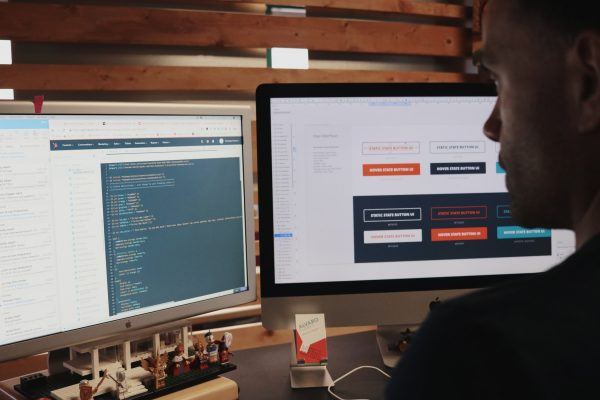Web software development, often referred to as web application development, is the process of coding and developing software for use on the web. A number of different coding platforms and technologies are used in web software development, including Ajax, ASP, ASP.NET, CSS, ColdFusion, Java EE, JavaScript, Perl, PHP, Ruby (including Ruby on Rails), CGI, Django, Wt and WebObjects. These technologies allow a broad range of web applications to be built, giving the rich variety to the industry of web software development.
Most web developers will use a text editor such as Notepad++ to edit their code, although some coding platforms such as ASP.NET will allow applications such as Microsoft Visual Studio to create code. Additionally, ColdFusion has many related open-source CFML engines which provide a number of different tools which can write code for ColdFusion web software development, including Adobe Dreamweaver CS4 and Adobe CF Builder.
One of the most popular Linux-based coding platforms is PHP, which is usually coded by hand but has a number of tools and debuggers available to help developers in building web applications in PHP. Visual programming environments for PHP web software development are available in the form of methods such as Hammerkit. Code generation tools such as M-Power, dbQwikSuit and nuBuilder may also be used in the automation of web software development, allowing experienced coders to accelerate the development cycle.
What does Web Development involve? (In English…)
Web software development contains a large amount of planning and testing. Initial planning largely focuses around security and risk. A personal website, for example, is unlikely to be the target of a cyber attack and is therefore deemed to be a low security risk. Web software development which includes the development of applications for government departments or stock traders, conversely, would pose a much greater risk and more care will be given to security, documentation and change control in order to mitigate risk.
In terms of testing, web software development processes use much the same testing programs as desktop applications, including unit, integration and system testing. Additional testing is often required due to the variation and scale in web software development. Such examples include security testing; performance, load and stress testing; HTML/CSS validation testing; accessibility testing; usability testing and cross-browser compatibility testing. Many of these are able to be automated using software packages in order to ensure code validates and the web application is fully accessible to all users.
It’s not just what you see on the computer screen…
With the advent and rise of social media websites, much of the web software development industry is now concentrated on building Facebook and Twitter applications. These websites will provide their own API frameworks, making the developer’s life much easier. In addition, a number of smartphone and mobile applications require in-depth web coding although they are technically platform-based applications. With many mobile web and smartphone applications using browser-based systems, web software development skills are vital in this new and emerging market.
Where is it going?
The rising number of open source projects means that web software developers are constantly working to improve other people’s products and software, ensuring that users have an active say in the development of many web products and applications. Although open source projects are not quite as open as wiki projects such as Wikipedia (due to the nature of web software development needing specific skills which must be learnt and honed), the very nature of open source web software development means that application development is no longer a ‘closed shop’.




